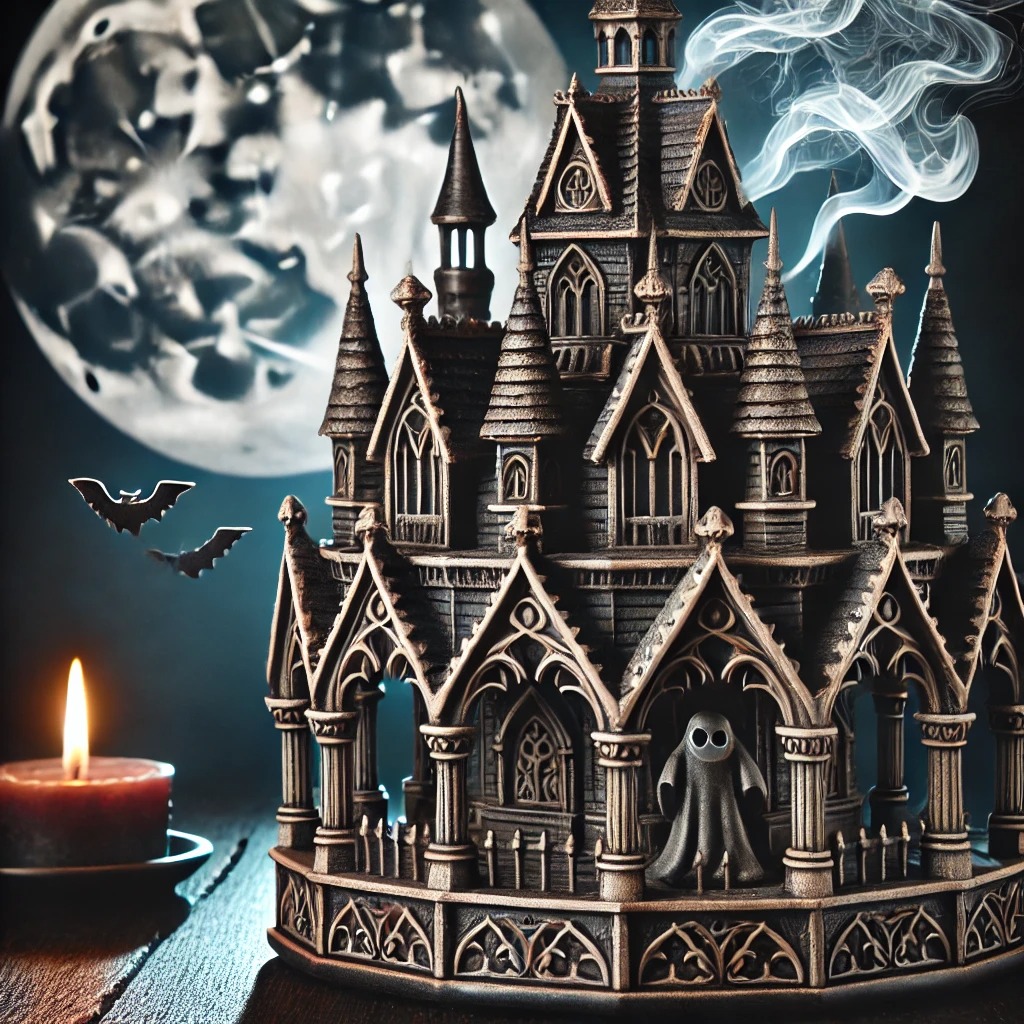
The ritual of burning incense is a practice steeped in tradition, serving both spiritual and aesthetic purposes. During the festive seasons of Halloween and Christmas, incense burners not only contribute to the ambiance through their scents but also play a significant decorative role. This article contrasts Halloween and Christmas incense burners, analyzing their design motifs, the cultural implications of their use, the typical fragrances associated with each, and their integration into seasonal celebrations.
Design Motifs and Aesthetic Features
Halloween Incense Burners are characterized by their thematic emphasis on the spooky and supernatural. Designs often feature elements like ghosts, skeletons, haunted houses, and mystical symbols that align with Halloween’s themes of horror and mystery. Materials are usually darker, sometimes incorporating elements like wrought iron or dark glass to enhance the eerie effect these burners are meant to invoke.
Christmas Incense Burner, in contrast, are often crafted to inspire warmth and nostalgia, incorporating icons of the festive season such as Santa Claus, angels, stars, and Christmas trees. The materials used—typically bright ceramics, polished wood, and sometimes metal with a shiny finish—reflect the light and joy associated with the holiday season.
Cultural Implications and Usage
Halloween Incense Burner reflect the holiday’s roots in ancient festivals like Samhain, which celebrated the end of the harvest season and honored the boundary between the living and the dead. The use of incense during Halloween is both a nod to these ancient rituals and a modern tool for setting a haunting atmosphere, suitable for storytelling and celebrating the otherworldly.
Christmas Incense Burners tap into a long history of midwinter incense use, which was historically intended to symbolize prayer and the intent of purification during the darkest days of winter. Today, these burners play a central role in creating a festive environment, often used in homes and places of worship to fill the air with scents that are as integral to the holiday as the music and decorations.
Typical Scents and Their Significance
Halloween Incense Burners often utilize scents that are rich and somewhat intense, such as sandalwood, patchouli, or amber. These fragrances are chosen for their deep notes that can transform a home into a haunted haven, supporting the Halloween theme of exploration into the unknown and the mystical.
Christmas Incense Burners commonly embrace warmer, sweeter scents such as vanilla, cinnamon, frankincense, and myrrh. These aromas are not just pleasant; they are deeply tied to Christmas traditions, evoking memories of holiday cooking, the natural scent of Christmas trees, and the historic use of frankincense and myrrh in ancient religious practices.
Integration into Seasonal Celebrations
Halloween Incense Burners are typically part of a larger array of decorations aimed at creating a visually and olfactorily stimulating experience. They are ideal for Halloween parties, eerie entertainment settings, and can be a central feature in entryways to greet trick-or-treaters with a whiff of mystery.
Christmas Incense Burners are often placed as centerpieces in living rooms or dining tables, contributing to the decor and spreading comfort and cheer among guests. The use of these burners during holiday gatherings is not just about fragrance; it’s about crafting an immersive experience that enhances the joy and communal spirit of Christmas.
Conclusion
While both Halloween and Christmas incense burners serve the practical purpose of scent distribution, they are also deeply symbolic items that enhance the festive atmosphere of each holiday through their carefully crafted designs and chosen fragrances. Whether setting the stage for a night of frights or enhancing the warmth and cheer of a family gathering, these incense burners are integral to the celebration of each season’s spirit.







